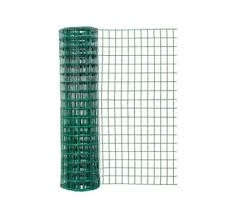Aug . 21, 2024 10:40 Back to list
Durable Wire Solutions for Effective Gabion Applications in Landscaping and Construction
Exploring Gabion Wire A Versatile Solution for Modern Projects
Gabion wire, an essential component of gabion structures, has become increasingly popular in various construction and landscaping applications. This article delves into the characteristics, benefits, and uses of gabion wire, shedding light on why it remains a staple in modern engineering and design.
What is Gabion Wire?
Gabion wire is a type of wire specifically manufactured for the construction of gabions—wire mesh containers filled with rocks, stones, or other materials. These structures are designed to be sturdy, durable, and flexible, making them suitable for a wide range of applications from erosion control to decorative landscaping. The wire itself is generally made from high-quality steel and is often galvanized or coated to enhance its resistance to corrosion and weathering.
Characteristics of Gabion Wire
One of the primary attributes of gabion wire is its strength. It is typically designed to withstand significant loads and pressures, which is crucial when filled with heavy materials such as rocks. The wire is woven into a mesh that allows for flexibility while maintaining structural integrity. The gauge of the wire varies depending on the application, with heavier gauges used for larger, more robust structures and lighter gauges suitable for smaller applications.
Moreover, the corrosion-resistant coating is vital for gabion wire, especially in outdoor environments where moisture and chemicals can degrade uncoated steel. The most common coating is zinc galvanization, but other options, such as PVC coating, are also available to provide additional protection and aesthetic appeal. This resistance to corrosion ensures that gabion wires and structures maintain their functionality and appearance over time.
Benefits of Using Gabion Wire
gabion wire

Gabion wire offers numerous benefits that make it an attractive choice for various projects. One of the most significant advantages is the environmental impact. Gabions promote natural filtration, allowing water to flow through while trapping sediment, which can help stabilize riverbanks and prevent erosion. This feature makes gabions an eco-friendly alternative to traditional retaining walls.
Another benefit is their versatility. Gabion structures can be adapted to fit a multitude of scenarios, from civil engineering projects like retaining walls and riverbank stabilization to decorative elements in gardens and public spaces. The flexibility in design allows for creative applications, which can enhance both functionality and aesthetics.
Additionally, gabion wire structures are cost-effective. The materials required for filling the gabions—such as local stones or recycled materials—are often readily available and do not require excessive transportation, reducing overall project costs. Moreover, the durability of gabion wire means that structures have a long lifespan, minimizing maintenance and replacement expenses.
Applications of Gabion Wire
The applications of gabion wire are diverse. In civil engineering, it is widely used for erosion control on slopes and riverbanks. Gabions provide an effective means of preventing soil erosion, particularly in areas vulnerable to heavy rainfall or flooding. In landscaping, gabion walls and planters are gaining popularity for their unique aesthetic appeal, blending functionality with design.
Gabion wire is also employed in road construction for retaining walls, ensuring stability and safety in various terrains. Furthermore, its adaptability allows for use in noise barriers, protective barriers, and even art installations.
Conclusion
Gabion wire is a remarkable material that combines strength, durability, and versatility, making it an ideal choice for a wide array of applications in modern construction and landscaping. As we continue to seek sustainable and efficient solutions, gabion wire structures provide practical answers to contemporary challenges, enhancing both the environment and our living spaces. Whether for functional purposes or aesthetic enhancement, gabion wire remains a valuable asset in the toolkit of engineers, architects, and designers alike.
-
The Role of Field Wire Fence in Grassland Conservation
NewsJul.15,2025
-
Stainless Steel Razor Wire Durability in Coastal Environments
NewsJul.15,2025
-
Enhancing Home Security with Mesh Fences
NewsJul.15,2025
-
Diamond Mesh Wire for Small Animal Enclosures
NewsJul.15,2025
-
Common Wire Nail Tensile Strength Testing for Woodworking
NewsJul.15,2025
-
Barbed Wire Corrosion Resistance Galvanization Techniques
NewsJul.15,2025









